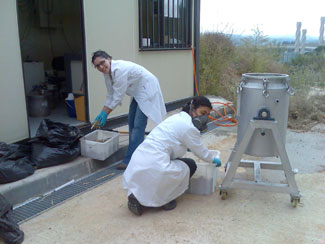How can we monitor the composting process?

Today, problems associated to solid waste management are of increasing importance in a sustainable development framework, because pollution caused by this type of wastes, jointly with an increasing generation, poses a big challenge for modern societies.
Accordingly, recycling and biological treatment of solid wastes have a low environmental burden; therefore they become an alternative recommended in Europe for waste management and treatment. Among these technologies, composting is of special relevance in Catalonia, where a large number of industrial plants have been built. Nevertheless, composting is a biotechnological process in which there is a lack in the knowledge of reliable techniques to monitor biological activity. Techniques especially suitable for the composting process are those related to the determination of the global biological activity.
In this research, dehydrogenase activity has been used for the monitoring of biological activity in a composting process of source-selected organic fraction of municipal solid waste, carried out at laboratory scale. Dehydrogenase activity is related to a group of enzymes which participate in the metabolic reactions producing energy in the form of ATP through the oxidation of organic matter, which is especially interesting in a composting process intended for waste stabilization.
The results obtained have permitted to demonstrate that the global biological activity (measured as dehydrogenase activity) is useful for the monitoring of the composting process, when it is compared to other typical measures, such as temperature, and other advanced monitoring techniques such as respiration index, in which our Research Group has a wide experience. Specifically, dehydrogenase activity showed high values at the beginning of the process, in the moment of maximum activity, and decreased during compost maturation. Notwithstanding this point, it is interesting to note that a basal level of biological activity was maintained even when the process was finished, which is typical of biologically-active materials such as compost.
References
"Dehydrogenase activity as a method for monitoring the composting process" Barrena, R; Vazquez, F; Sanchez, A. BIORESOURCE TECHNOLOGY, 99 (4): 905-908 MAR 2008


